In November 2021, Detective Sergeant Lee Gavin appeared on Crimecall appealing for the public’s help in relation to an unidentified body of a man found in Bracetown, Ratoath, Co. Meath. The remains of the deceased man were found by council workers in the early morning on 18 April 1991. The death was not deemed suspicious nor was there any foul play suspected. Unfortunately, the man did not have any documentation that would allow for his identification.
Retired Sergeant Alan Dowley led the investigation to identify the deceased man and return him to family and loved ones. Unfortunately the man’s identity was not established and he was buried at St. Mary’s cemetery, Navan, Co Meath.
A review of the case was conducted by Gardai in early 2021 which led to an exhumation being performed last August, in the hope of retrieving a DNA profile for comparison. Unfortunately, a DNA sample could not be generated. Numerous witnesses were re-interviewed but despite extensive efforts made by local Gardaí in conjunction with the Garda Missing Persons Bureau, the man was still unidentified.
A portrait artist was tasked with producing a sketch of the man’s face based on photographs taken at the time and this sketch was subsequently shown on Crimecall in November 2021.
Michael Leonard in Mountcharles, Co. Donegal was watching Crimecall and recognised the man to be Paul McGinty. He confirmed this with his brother John Leonard. Paul and John had grown up together in Mountcharles before travelling to Coventry, England for work. They lived and worked near each other and often socialised together. John last saw Paul in a pub in Coventry around Easter time 1991.
After confirming this with his brother, Michael Leonard then approached his friend and Paul McGinty’s sister, Eileen McGinty. After showing her the picture, she instantly recognised the man as her missing brother, Paul.
Detective Sergeant Lee Gavin established details as to Pauls last known place of residence and tried to make contact with his old landlord, Jimmy Clifford, who is now deceased. They succeeded in tracing Jimmy’s granddaughter Sinead Collins, and were able to make contact with her. Sinead also recognised the sketch as being that of her grandfather’s lodger, Paul McGinty.
Detective Sergeant Lee Gavin submitted his full investigation file to the coroner and an inquest date was set. The Coroner heard full facts of the investigation that had taken place, and after 31 years, was able to give Paul McGinty back his name which led to the McGinty family getting some closure.
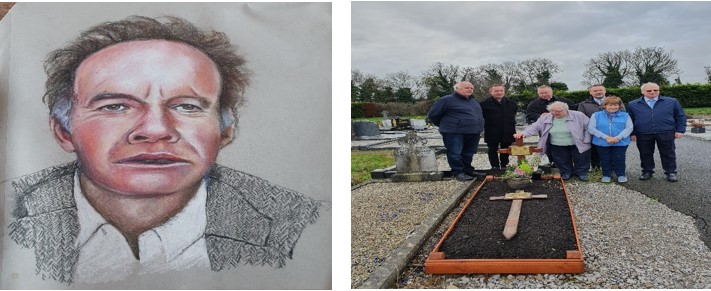
The Commissioner discussed the successes and challenges during the Centenary year of An Garda Síochána. In celebrating the symbolic year, he acknowledged the contribution of both serving and past members. He said it was important to remember the (89) fallen members who had made the ultimate sacrifice in the line of duty.
He reassured the public of An Garda Síochána’s commitment in bringing those responsible for organised crime to justice, and spoke about working closely with international forces, to progress a positive out come
In terms of incidences of assaults on Garda members, the Commissioner explained that the nature of the work of An Garda Síochána has resulted in Gardaí having to intervene in difficult and fluid situations. The Commissioner highlighted that every effort is made to train and equip members to deal effectively with their duties to the highest standard. He explained these assaults did not reflect An Garda Síochána’s relationship with the communities it serves, which he said remains extremely positive.
The Commissioner was positive in relation to the Garda recruitment drive and acknowledged that while the number of applicants did decrease during the Covid period, he expects to see an increase in the region of 800 new entrants during 2023.
In relation to Garda suspensions he said that it was important complaints are investigated and stressed the importance of the public being able to enjoy the full trust of Gardaí. He did emphasize that morale was high among both Garda and Garda staff members.
Finally, the Commissioner said it was a great privilege to lead such a great organization and sought to thank Gardaí and Garda staff for their commitment throughout the year. He said An Garda Síochána was appreciative of the public and community support.
Garda Adrian Corcoran also discussed driving conditions as a result of the recent drop in temperature.
Driving in Snow and Ice

In extreme weather conditions you should ask yourself if making a journey by road is absolutely necessary. If it’s not, consider delaying your trip until the weather and road conditions improve. This is especially important if you are a vulnerable road user such as a pedestrian, cyclist or motorcyclist.
You should:
- Service your vehicle so that it is safe for winter driving
- Top up with anti-freeze and screen wash
- Check for wear and tear on wiper blades and replace them as soon as they start to smear rather than clean windows
- Keep tyre pressure at the manufacturer's recommended level and check you have at least 3 millimetres of tread depth
- Make sure all vehicle lights are working and clean
Clear windscreen
Ensure all your windows are clean and free from snow and bring a scraper and de-icer with you. Snow left on the roof will become loose and can drop onto the windscreen during braking, thereby causing sudden and severe restriction to your vision.
Check your lights and indicators as falling snow reduces visibility. Make sure your mobile phone is fully charged. If your car has rear wheel drive the addition of extra weight in the boot, such as a bag of sand or cement, will help your wheels to grip.
Driving advice in icy conditions
It takes longer to stop a vehicle in snow or on icy roads so slow down and allow extra distance between you and the vehicle in front. During your journey remember the following:
- keep a sharp lookout for pedestrians, cyclists and other vulnerable road users
- keep your windows clear of snow during your journey
- manoeuvre gently and avoid harsh braking, acceleration or steering as these can induce a skid
- use the highest gear possible to reduce the engine revs as this will help avoid wheel spin
When travelling downhill, especially through a series of bends, select a low gear as early as possible and allow your speed to reduce using the brake pedal gently
Driving
Gently does it. Manoeuvre gently, slow down and leave extra distance between you and the vehicle in front. Too much steering is bad and avoid harsh braking and acceleration. Use the highest gear possible to avoid wheel spin. Select a low gear when travelling downhill especially if through bends. Falling snow, fog, rain, or hail will reduce visibility. Do not hang on to the tail lights of the vehicle in front of you as it can give a false sense of security. When you slow down, use your brakes so that the brake lights warn drivers behind you.
Watch out for "black ice." If the road looks polished or glossy it could be, "black ice” one of winters worst hazards: Black Ice is difficult to see! It is nearly invisible.
Advice to walkers and cyclists
If a journey cannot be avoided, pedestrians should be extremely careful as snow and ice can make walking on footpaths very dangerous. Wear sturdy footwear with good gripping soles. Take an extra look before you cross the road and do not attempt to cross the road if there are vehicles around – remember snow and ice increase the distance that cars need to stop. Visibility is reduced in snowy condition so wear high visibility clothing or carry a torch.
Advice to motorcyclists and cyclists
Motorcyclists and cyclists should consider their safety before using their motorcycles / bicycles in icy/snow conditions. Controlling two wheeled vehicles in snow or icy conditions is extremely difficult and there is an increased danger of a collision with a vehicle that is out of control. Consider taking alternative transport or walking.
Garda Adrian Corcoran was in studio to discuss An Garda Síochána’s Christmas and New Year Enforcement Campaign 2022 commenced on the 1 December and will continue right through to 3 January 2023.
The operation will focus on driving while intoxicated - drink driving and drug driving. It will see an increase in enforcement in terms of mandatory intoxicant testing checkpoints-where Gardaí have power to test drivers for the presence of alcohol and drugs.
During the Enforcement Campaign for the Christmas period in 2021 there were 533 people arrested for drink driving and 277 people arrested for drug driving. This included a number of arrests for both drink and drug driving on Christmas Eve, and Christmas Day. Our Roads Policing Gardaí will be out every day over the Christmas period posting checkpoints throughout the country.
Gardaí ask people going out socialising this Christmas to plan ahead. Leave the car at home. Over the years they’ve seen where people drive out with the intention of leaving the car behind and getting a taxi or public transport home. When they are leaving its raining and there are no taxis and suddenly they are behind the wheel driving home. Leave the car at home and it removes the temptation to drive home.
People should also be mindful of driving the next morning after a night out. Make sure enough time has elapsed to allow the alcohol to pass through your system.( 4,990 arrests to date 2022 drink driving and 2,595 for drug driving.)
Appeal
- Never, ever Drink/Drug drive
- Book a taxi or use public transport
- Nominate a Designated Driver
- Make sure you are Alcohol free the next morning
Since April 2017 Gardaí have the power to carry out roadside drug testing, by analysing an oral fluid sample at the roadside. If it shows the presence of drugs the person will then be arrested and taken to a Garda station where they will be required to provide a blood sample. This is then sent to the Medical Bureau of Road Safety where it is analysed, with the result of the examination being used by Gardaí as evidence in court.
Prior to the April 2017 (Road Traffic Act 2016) a Garda had to have a specific reason to stop an individual under suspicion of driving under the influence of an illicit drug before they could take further action. The introduction of this legislation gave Gardaí the power to conduct roadside drug testing and the previous requirement to prove impairment or incapacitation no longer applied for cannabis and cocaine use.
Since April 2017 Gardaí conducted roadside drug testing using a device called the Drager Drug Test 5000. This device analysed a sample of Oral Fluid to detect the presence of four different drugs:
- Opiates
- Cocaine
- Benzodiazepines
- Cannabis
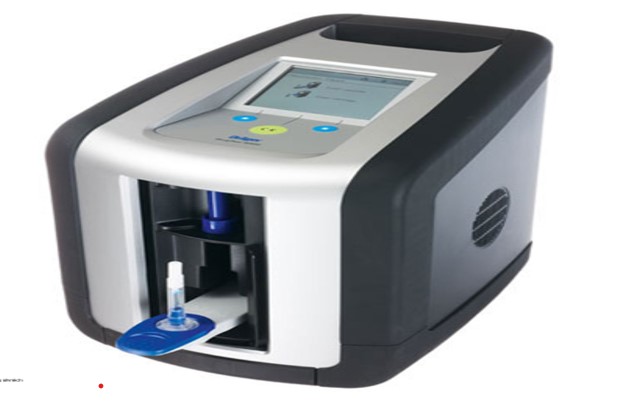
Drager Drugtest 5000
Requires regular checks and maintenance

Securetec DrugWipe 6S
Detects all the drugs the DT5000 detects but also includes detection of Amphetamine, Methamphetamine and Ecstasy
Oral fluid collection is very rapid
Test time 2-8 minutes
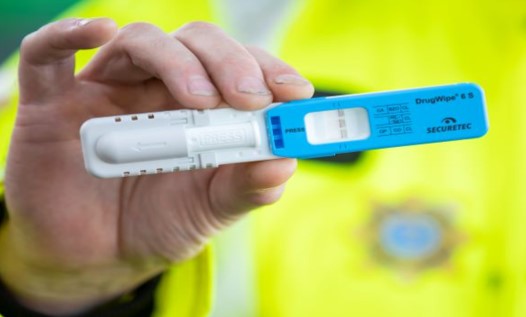
Only validated for 4 drugs
On December 1st 2022 An Garda Síochána rolled out the Securetec DrugWipe 6S across the country. This device has replaced the Drager DT5000. Similar to a Covid 19 antigen test, the DrugWipe 6S is a portable unit which delivers faster results than its predecessor.
Like the Drager DT5000 it tests for the presence of Cannabis, Cocaine, Benzodiazepines and Opiates but the DrugWipe 6S also tests for Amphetamine and Methamphetamine.
Drug Driving Penalties
l A minimum 1 year driving disqualification if you are found to be above the legal threshold for cocaine, cannabis or heroin (since April 2017)
l A minimum of 4 years driving disqualification if you are found to have drugs in your body and are impaired to such an extent that you do not have proper control of a vehicle
l Up to €5,000 fine
l Up to 6 months in prison
Penalties for drink driving range from 3 months to 6 years’ disqualification, a fine of up to €5000 or 6 months imprisonment.
Gardaí will be on the roads on a 24/7 basis over the Christmas period. They will focus on all lifesaver offences but particularly driving while intoxicated. They will intercept drink and drug drivers, please don’t be one of them.
In the first two weeks of the Christmas Campaign (Dec 1st-14th) there have been 1,647 MIT Checkpoints carried out. There were 5,976 roadside breath tests (22 positive) and 145 roadside oral fluid tests (5 positive) performed at these checkpoints.
In the same time period there were 173 drink-driving and 71 drug-driving arrests.
The Gardaí at Ballyconnell Station are investigating three bomb explosions that occurred at Belturbet, Co. Cavan, Clones, Co. Monaghan and Mullinagoad, Pettigo, Co. Donegal. On the evening of 28 December 1972 the explosions occurred without warning and within 50 minutes of each other.
Following the publication of an RTÉ investigates programme called ‘The Belturbet bomb; an atrocity that time forgot’, a review of the Belturbet bombing investigation was initiated on 3rd August 2021. On completion of the review, and following consideration of the review report, on 19th September 2022, a Senior Investigating Officer was appointed to lead the investigation and an Incident Room was established at Ballyconnell Garda Station.
The Belturbet explosion resulted in the deaths of two children, Patrick Stanley(16) and Geraldine O’Reilly (15) who were killed instantly. Tragically, a local man from Clones, Patrick McCabe also died on 4 January 1973 when he fell from a roof that he was repairing that was damaged during the Clones explosion. His death left a widow and eight children without a father. Numerous other people were injured during all three explosions to such an extent that they required hospitalisation.
Belturbet, Co Cavan

On 28 December 1972, sometime after 5pm the suspect car in the Belturbet explosion, a red Ford Escort, was stolen from outside the home of its owner in Enniskillen, Co. Fermanagh.
A Garda check point was in operation on the border between Co. Fermanagh and Co. Cavan at Aghalane Bridge Customs Post. At approximately 9.05pm the red Ford Escort, approached the check point from Northern Ireland and was stopped by the Gardaí on duty. Unknown to the Gardaí, the red Ford Escort had been stolen from Enniskillen earlier that day. The Ford Escort then proceeded to Main Street, Belturbet, when at 10.28 p.m a bomb contained within the car exploded outside Farrelly’s Bar and McGowan’s Drapery.
The Garda on duty at the checkpoint gave a detailed description of the driver of the stolen Red Ford Escort, from which this photofit composite was compiled.

Suspect Ford Cortina:
At approximately 9.50pm, prior to the explosion, a Ford Cortina, was seen double-parked outside Hunt’s pharmacy on Main Street. It is believed that this was in fact a lagoon blue Ford Cortina registration number BIA 477 which was stolen from Main Street that night. On 2/3 January 1973, this car was found by the R.U.C. at Crumlin, Co. Antrim. It was bearing registration plates of another car.
The lagoon blue Ford Cortina, registration BIA 477 had been noticed initially on 31 December 1972. When it was still there two days later, the R.U.C. called in the British Army who carried out a controlled explosion. The car was subsequently destroyed by fire.
The original registration plates for the lagoon blue Ford Cortina, registration BIA 477, which was stolen from Main Street, Belturbet have not been found to date and are subject of today’s appeal.
(The registration plates are similar in appearance to these, but may have been white in colour with black writing)

Description of occupants of the Ford Cortina:
Description of Driver:
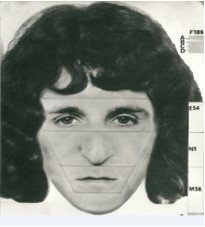
- (1) Male, 18 years old 5’8” thin build, long thin pale face, long dark brown hair (curly), curls all over head, hair well-groomed and coming almost to chin, staring type eyes, very conspicuous nose, very pale complexion, delicate looking, wearing a dark blazer with shinny buttons, double breasted with wide lapels, maybe silver buttons plain design, collar and tie, light coloured shirt and dark tie, neatly dressed, appeared to be a clerical worker, wore a silver or steel band around his wrist – maybe a watch.
Description of female in rear of car:
- (2) 18-19 years old, fairly tall, blonde hair coming down over shoulders, parted in the centre and pushed away from forehead, sharp featured, pale complexion, good looking, very light eyebrows, long dark overcoat (maybe red), polo neck pullover.
No’s 1 and 2 look like they could be related
Description of Men who got into the same car:
Both dark haired, hair not as long as the driver’s hair, both about 20 years, (appeared taller than (1) above dark conservative clothes, well groomed, Northern accents, thought to be Belfast, both taller than driver. All appeared to be well dressed as if they were going to a dance or some function.
Victims Patrick Stanley and Geraldine O’Reilly:
Patrick Stanley:
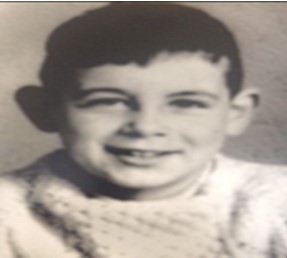
Patrick Stanley (16) was from Clara, Co. Offaly. Survived by his parents, Teresa (RIP) and Joe (RIP) and ten siblings. A keen hurler, Gaelic footballer and soccer player, Patrick had recently won an All-Star award for Gaelic football with his school, Árd Scoil Ciarán. He had applied for a cadetship in the Army and, at the time of his murder, was temporarily employed by local businessman, Pat Jennings.
Patrick was employed as a helper on a Calor Gas delivery lorry. On this particular evening, there had been a problem with the lorry; he and the driver decided to stay in Belturbet overnight. When the bomb exploded, Patrick Stanley was in the public phone kiosk on Main Street, trying to telephone his parents to tell them he would not be home. He was killed instantly.
Geraldine O’Reilly:
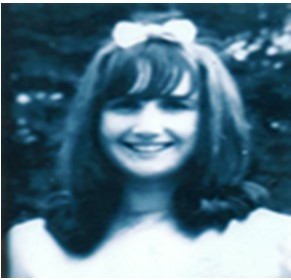
Geraldine O’Reilly (15) was from Drumacon, Staghall, Belturbet, Co. Cavan. Survived by her parents, Mary Kate (RIP) and Joseph (RIP) and seven siblings. Geraldine was the youngest of her family and had completed her Group Certificate examination the previous June, gaining six honours and intended taking up a career in nursing.
Geraldine O’Reilly had come into town with her brother Anthony to get some chips for her family. The bomb car was parked directly opposite the chip shop. The explosion occurred while she was in the shop. She too was killed instantly.
Descriptions of unidentified males in Belturbet:
These three men were not known locally, and thought to have Northern Ireland accents, were seen in Belturbet on the night of December 28th.Gardaí would like to identify these men and speak to them to see if they can help/ assist in progressing the investigation.
- a) 25/28 years, 5’11” to 6’0” approx., dark brown or black bushy hair, not too long, combed across forehead in a short fringe, sidelocks, broad/round face, fresh smooth complexion, very well built, wore black leather or plastic ‘wet look’ jacket with zip fastener, high collar turned up at back, side pockets, the word ‘DUNLOP’ in white ¾” lettering on breast or sleeve of jacket, large grey or white squares on trousers, spoke with northern accent
- b) 23 to 25 years, 5’7” or 5’9”, straight dark coloured hair, medium length and well groomed, long oval shaped face, pointed chin, light build, wearing expensive looking black jacket with zip, also described as having buttons, side pockets, bell bottom trousers, collar and tie. He wore a watch with gold bracelet.
- c) Somewhat similar in description to No 2 and witnesses were of the opinion that No’s 2 and 3 could have been related.
Garda Appeal Belturbet:
Occupants of Ford Escort:
- Do you know the identity of the person depicted in the photofit - the driver of the stolen Ford Escort stopped by the Gardaí at the checkpoint at Aghalane Bridge? There may have been a female front seat passenger in the car? Do you know the identity of either/both of these individuals?
- The Ford Escort was stolen in Enniskillen earlier that same evening. Do you know the identity of the person(s) involved? Do you know where it was parked/stored from when it was stolen?

Occupants of Ford Cortina:
- Do you know the identity of the person depicted in the photofit – the driver of the blue Ford Cortina stolen from Main Street Belturbet?
Photofit of Driver:

- Can you identify the other occupants of the Ford Cortina?
- Gardaí believe that the female passenger and driver may be related? This is on the basis that they are described as being of similar in appearance. Can you identify them?
- The lagoon blue Ford Cortina registration plates (number BIA 477) have never been recovered. Do you know who may have removed these original plates from the car or who had possession of them?
Descriptions of unidentified males in Belturbet pub:
- Can you identify the individuals who were in a Belturbet pub on 28 December 1972, one of whom was wearing a distinctive ‘DUNLOP’ jacket?
- Finally can you assist with any aspect of this investigation? Let the investigation team assess whatever it is that you have to offer? Sometimes the smallest piece of information can prove critical to developing leads with an investigation.
Clones, Co. Monaghan:

At 10.01 p.m. on 28 December 1972, a bomb which was contained in a car exploded in Fermanagh Street, Clones, Co. Monaghan, seriously injuring two men.
The car that contained the Clones bomb, a blue Morris 1100, registration 431LZ?, had been stolen from a car park in Enniskillen, Co. Fermanagh between 6.30pm and 7.35pm on 28 December 1972.
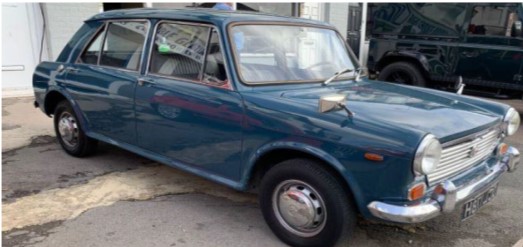
Gardaí have received information that a person who is missing some fingers was observed driving a stolen blue Morris 1100 on 28 December 1972 in Co Fermanagh.
Gardaí would like to identify this man to speak to him to see if he can help/ assist in progressing the investigation.
Patrick McCabe:
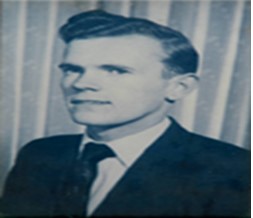
Gardaí would like to remember a local man from Clones, Patrick McCabe who died on 4 January 1973 when he fell from a roof that he was repairing that was damaged in the Clones explosion. His death left a widow and eight children without a father. Patrick’s death highlights the grave and far reaching implications of the Clones explosion.
Garda Appeal Clones:
- Do you know the identity of the man described as missing some fingers?
- Do you know anything about the Morris 1100 stolen earlier that evening?
- Do you know the identity of those involved?
- Finally can you assist in any way with this investigation? You may know some small piece of information that may prove critical to progressing the investigation.
Pettigo, Mullnagoad, Co Donegal:
At 10.50 p.m. on 28 December 1972, a bomb exploded outside a licensed premises called Britton’s in Mullnagoad, near Pettigo, Co. Donegal.
The device had been left beside the pub in a container. A female victim was injured as a result.
Garda appeal - Pettigo
- Do you know the identity of the person(s) who placed this device/container outside of the pub?
- Have you any information that may assist with the investigation?
General appeal:
Maybe you haven’t been able to speak to Gardaí at the time or since for whatever reason. But perhaps now due to relationships and loyalties having changed, with the passage of time, you may now feel better placed to do so. Gardaí would like you to know that your call will be dealt with great sensitivity and compassion and urge you to do so before the opportunity to finally bring closure to the families of those killed and injured is lost.
Finally, anyone with information in relation to the Belturbet, Clones or Pettigo, or indeed any other similar crime, to make contact:
- Crimecall 1800 40 50 60
- Ballyconnell Garda Station incident room 049 9525580
- Garda confidential line Free-phone 1800 666111
- Crimestoppers 1800 250025 or Crimestoppers Northern Ireland 0800 555 111.
